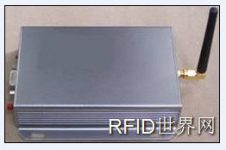
Prey RFID patient monitoring management application case
[ad_1]
In the hospital, if a doctor is looking for a specific patient, it takes a lot of time to check and check the ward, or find it elsewhere in the hospital-because the patient often needs to be in the cardiovascular laboratory, radiology department, and gastrointestinal department. Perform examination or treatment. To view medical information such as patient history, allergies, etc., you have to search through a pile of papers. At the same time, for patients who are unconscious or suffering from amnesia, leave their bed or leave the hospital and get lost. Now, the patients under key monitoring have their own smart tags, each with their name in the patient management system, as well as all medical history, medications taken and other information. Through the visual software system, it is easy to locate and view at any time. . This can effectively help doctors save clinical time, monitor and track the location of patients in real time, and limit patients to certain unsafe areas.
I. Overview
The RFID patient positioning and tracking system developed by Pritech Technology enables the physical location of the patient to be grasped through the electronic display screen of the nurse station or the monitoring computer of the hospital or the doctor’s portable PDA. This realizes 7*24-hour real-time status monitoring of surgical patients, mental patients, and mentally handicapped patients to ensure patient safety. Their purpose is to reduce the frequency of medical accidents and improve the medical level of the hospital by optimizing the course of treatment for doctors and patients and improving the care of patients.
By attaching battery-powered RFID tags to the patient, the receiver that detects these tags is connected to the existing local area network and transfers positioning data to the location software. The physical location of the person can be graphically displayed on the interface of the control software. In order to achieve positioning accuracy and high precision, it is generally necessary to deploy signal receiving and transmission equipment in wards, corridors, halls and other areas to form a full range of coverage. At present, large and medium-sized hospitals, nursing homes and other medical institutions in the United States and some European countries have implemented or are planning to implement this system.
The RFID patient tracking system successfully implemented by Pritech in Hong Kong and other places currently uses RFID active smart electronic tags, which work at 2.4GHz and will not cause interference to medical equipment. Its size is about 4*7cm, and its thickness is less than 2mm. It can be made into wristbands, badges, etc., or directly sewn into hospital gowns. Wear electronic tags to patients who need to be tracked and monitored, and you can grasp their real-time information with one hand. Through the local area network, the patient’s real-time position, status and other information can be monitored, and then read out in the control software. Hospital administrators can learn the real-time location and status information of patients with simple mouse operation, so as to quickly find them and implement corresponding medical procedures.
2. Patient Management
Patient management includes basic patient information, medical order information and TAG management, and establishes a corresponding relationship between patient information and electronic tags.
3. Monitoring Center
The monitoring center includes real-time monitoring of patient information and monitoring records. When a patient enters or leaves a certain monitoring range, the system can alarm through the software interface and sound and light equipment.
Four, hardware products
The system uses 2.45GHz reader and active tag, 2.45GHz reader uses advanced 0.18um CMOS circuit, high density, low cost, small size design, suitable for various radio frequency identification schemes, and can also be used in a variety of ways Layout (from simple shape network to complex group network). The reader can choose omnidirectional recognition or directional recognition according to needs, the range of 0-100 meters is adjustable, and it can recognize 100 electronic tags at the same time. The following are the technical parameters of the reader and active electronic tags.

2.45GHz reader
Main features:
1 Standard λ /4 rubber whip antenna / plate directional antenna (receive radio frequency signals directionally)
2100 ― Fast reception of tag RF signals within a range of 150 feet (adjustable reading distance)
3 With RF collision avoidance function, it can efficiently and quickly read 80-100 tag RF signals per second
4 Interface types: RS232/RS485, TCP/IP, GPRS, Can-Bus
5 Power consumption: 50mA, 5-12V
6 Specifications: 126*104(82.5)* 28mm
7 Working modes: direct mode and buffer mode. The direct mode is to send immediately after receiving the TAG signal.The buffer mode is to store the received TAG signal and send it until the host requests it
8 buffer mode storage quantity: 800 latest TAG data
2.45GHz active electronic tag
Main features:
1 Frequency of use: 2.45G.
2Data transmission rate: 1Mbps.
3 Transmission distance: 100 ― 150 feet.
4 Communication method: read only.
5Serial number: 8 bytes.
6 Life span: four years.
7Label specifications: card type, 85.5*54*4mm. Two types of waterproof housings, card type and strip type, are available. The protection level is IP65, which can be used in harsh external environments.
Five, application areas
This system can be customized according to the management requirements of factories or enterprises and institutions, including the selection of system application functions and hardware equipment, to achieve various positioning or monitoring management requirements for staff or outsiders.
Different regions can choose different hardware operating frequencies, such as 2.45GHz or 915MHz, according to different environments.
[ad_2]


